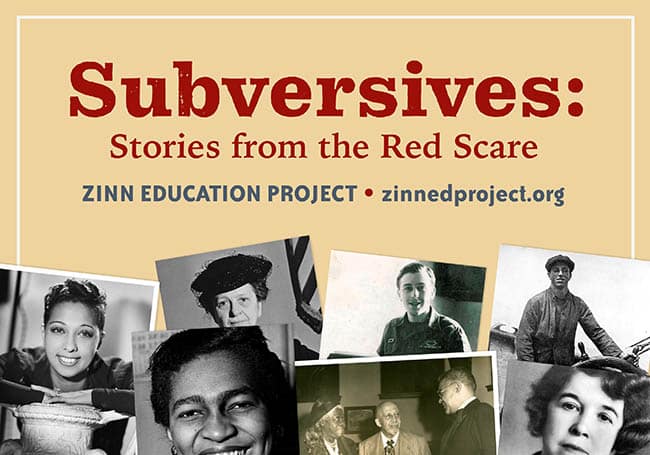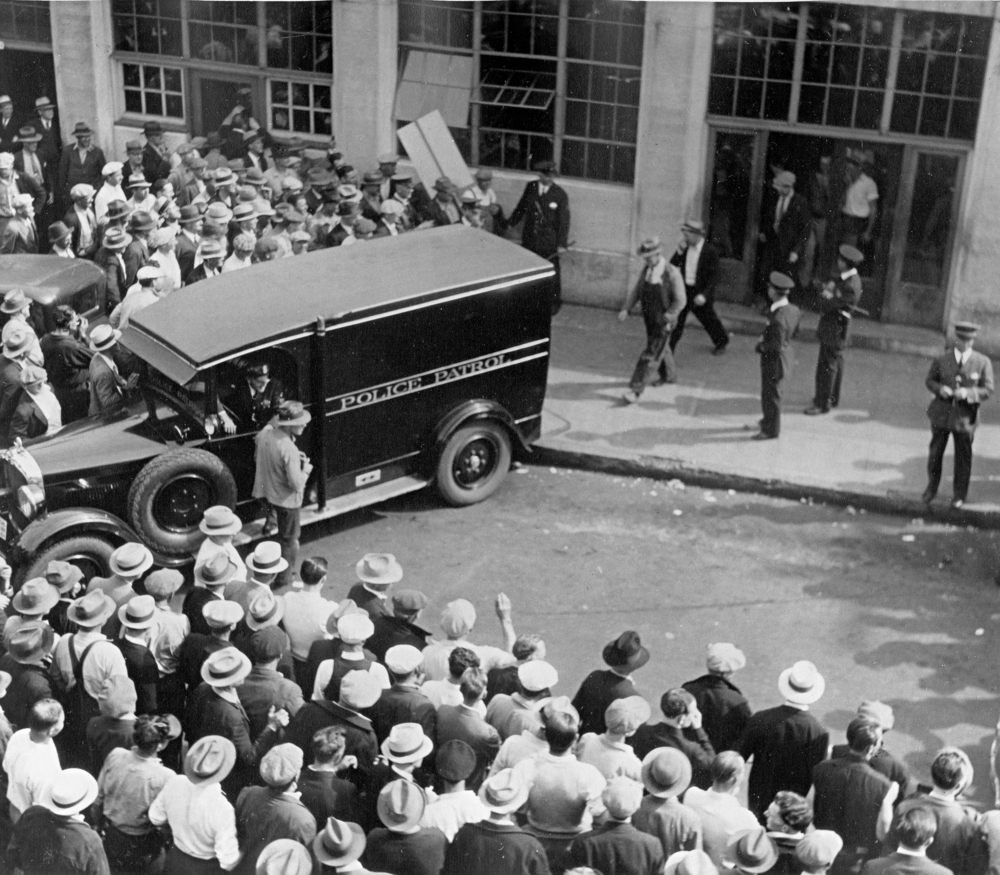
A confrontation between a policeman wielding a nightstick and a striker during the San Francisco General Strike, 1934. National Archives at College Park, public domain, via Wikimedia Commons
Starting in the spring of 1934, longshoremen across every port on the West Coast struck against the unfair hiring tactics that they experienced daily. The shipping companies that the men were employed by did not require union membership and therefore the majority of the employees were unrepresented. In 1933, workers united to publish the Waterfront Worker, a newspaper demanding an independent union and better working conditions.
On May 9, 1934, the International Longshoremen’s Association (ILA) went on strike to demand union recognition, reduced hours, and increased wages along with a union hiring hall. Primarily, the workers were protesting the daily “shape-up,” a hiring system that required the longshoremen to line up each morning and ask for work.
Late in the evening of May 15, police shot and killed Dickie Parker and John Knudsen, and shot five other strikers. The worst of the violence occurring on “Bloody Thursday,” memorialized on July 5. During these bouts of police-initiated violence, the press often blamed radical “Reds,” later arresting five people associating with the Communist Party. On July 31, employers agreed to negotiate with the union for a fair hiring process and shorter hours, ending the strike. Harry Bridges, a longshoreman, was targeted by the U.S. government and threatened deportation four times for his supposed connection to the Communist Party.
The 1934 Longshore Strike marked an end to decades of employer-controlled hiring processes and labor policies and is sometimes credited for initiating the resurgence of unionism on the West Coast. For a lesson on the history of labor unionizing and the anti-communist sentiments supported by the press and government, check out Subversives: Stories from the Red Scare.
This entry was prepared by Lila Chafe.










Twitter
Google plus
LinkedIn